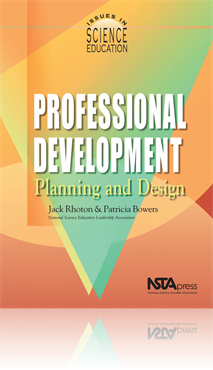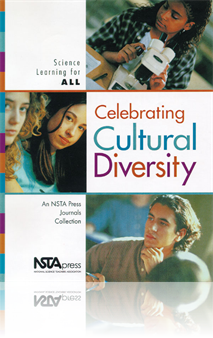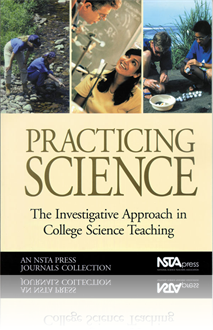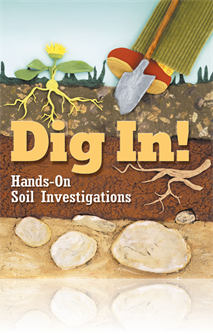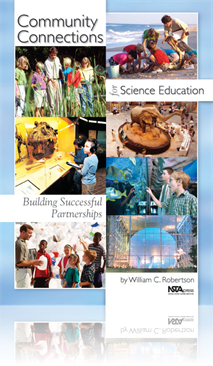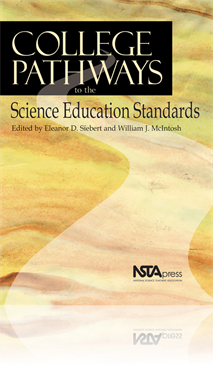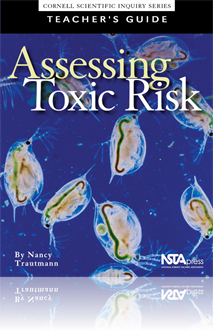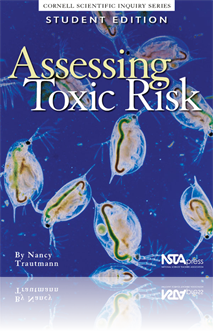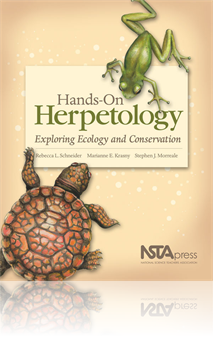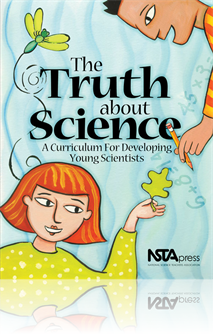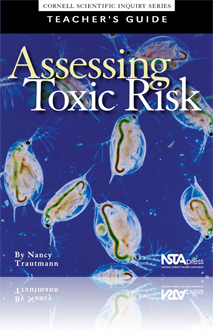All Resources
Journal Article
How do you light a fire under a class of 36 thirteen and fourteen-year olds and convince them that they want to learn about physics, chemistry, and math so badly that they are willing to give up recess and lunch to learn more? For the author’s stud...
Book Chapter
Standards have become a part of the educational landscape. In this chapter, we survey the origins of national standards; reflect on their power, in particular those in science education; and examine the role professional development must play if stan...
Book Chapter
The Role of the Science Leader in Implementing Standards-Based Science Programs
Although most of the literature of reform and systemic change focuses on policy, programs, and practices that the leaders should be responsible for producing, this chapter will emphasize what is known about how leaders bring about these improvements ...
Book Chapter
Celebrating Cultural Diversity: Science Learning for All—An Introduction
What is a “multicultural” classroom? Classrooms, even if they are filled with non-majority students, are not necessarily multicultural. There are three elements necessary for a truly multicultural science-learning environment: First, the sense th...
Book Chapter
What Should Students Learn About the Nature of Science and How Should We Teach It?
The purpose of this article is to: 1) explicate the central pattern of scientific reasoning, 2) show that the pattern has been applied by scientists to help answer a wide range of scientific questions, and 3) argue that sequencing instruction that ...
Book Chapter
Two natural forces are continuously at work on the landscape—the forces of destruction and the forces of construction. In locations of destruction, the material that is lost through natural events must go somewhere else, and landforms are construct...
Book Chapter
This section introduces students to the animals that depend on soil. In addition to studying the animals students can see, introduce them to Earth's vast invisible life—the billions of microscopic organisms, such as bacteria, protozoa, fungi, and a...
Book Chapter
Soil erosion can be caused by water or wind. Although undetectable at first, the natural process of erosion from water and wind can lead to significant soil losses from agricultural and urbanizing land. In this section, students simulate rain and win...
Book Chapter
Soil is the solid material on Earth’s surface that results from the interaction of weather and biological activities with the underlying geologic formation. Soil is produced from broken down rocks, organic matter (decayed animal and plant life), wa...
Book Chapter
Because you are reading this book, we are going to make the bold assumption that you’re interested in creating, improving, or solidifying a formal-informal partnership in science education. In this chapter, you will discover the opportunities that ...
Book Chapter
The Standards vision guides the discussion in this chapter on science teaching standards for the postsecondary level. The discussion centers on the importance of goal setting, designing experiences to meet students’ needs, assessment, and collegial...
Book Chapter
One of the reasons for studying toxicology at the high school level is its relevance to everyday life. On a daily basis we are confronted with news reports about toxic chemicals in our food, water, and environment. How do we decide which of these are...
Book Chapter
Toxicity indicates how poisonous a substance is to biological organisms. To measure a chemical’s short-term toxicity, scientists carry out something called a “dose/response” study. The word dose refers to the total amount of a substance to whic...
Book Chapter
Before starting any of the activities in this guide, we strongly recommend that you read the information in this section. Here we cover the critically important issues of how to handle amphibians and reptiles, and safety issues concerning these anima...
Book Chapter
Research Questions and Hypotheses
This first section guides students to ask testable questions, and formulate hypotheses and null hypotheses. Students also become familiar with the parts of a science research report. This structure reinforces the concepts of quantitative observations...
eBook
Assessing Toxic Risk (Teacher's Edition) (e-book)
Assessing Toxic Risk is a comprehensive guide to student research in toxicology. It includes an overview of basic principles of toxicology and how they are used to assess chemical risks. It provides simple but authentic research protocols to engage s...
Journal Article
After the Bell: Life in hot water
The mysteries of the sea offer the allure of adventure for scientists of all ages, and advances in technology supply the tools to explore this frontier. Therefore, the Discovery Channel, Woods Hole Oceanographic Institute (WHOI), and John Hancock Fin...
Journal Article
Storm Trackers: In an inquiry-based unit, students learn to track hurricanes
Storm Trackers is an inquiry-based unit designed to combine science, mathematics, geography, and English in an Earth science class. It places students in realistic problem-solving situations and presents meteorology content and hurricane tracking pro...
NSTA Press Book
Hands-On Herpetology: Exploring Ecology and Conservation
Plentiful, diverse, and readily available, these animals—known in science as “herps”—are also perfect for teaching students about biology, ecology, and conservation, including problems affecting both amphibians and reptiles. This highly re...
By Rebecca L. Schneider, Marianne E. Krasny, Stephen J. Morreale
NSTA Press Book
College Pathways to the Science Education Standards
This one-of-a-kind book applies the Standards, written for K-12 classes, to the college level. Designed for postsecondary science content teachers, science educators, and administrators, this book shows how to implement all six areas of the Standards...
NSTA Press Book
Celebrating Cultural Diversity: Science Learning for All
Science Learning for All: Celebrating Cultural Diversity covers three must-know” areas of multicultural science education: inclusive curriculum design, multicultural teaching strategies, and language diversity in science teaching and learning. Wit...
By NSTA Press
NSTA Press Book
Building Successful Partnerships: Community Connections for Science Education
No single educator can help children learn all they need to become scientifically literate. Resources are all around us—not only in traditional science classrooms and laboratories, but also in gardens, nature centers, parks, youth programs, museums...
By William C. Robertson




